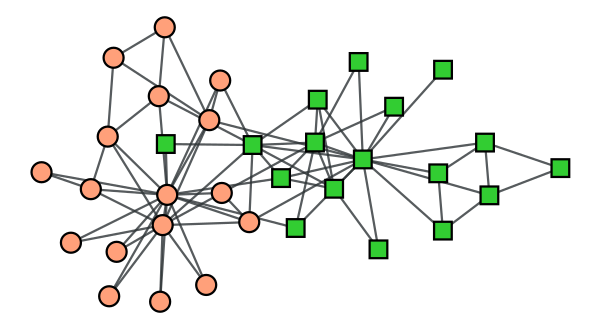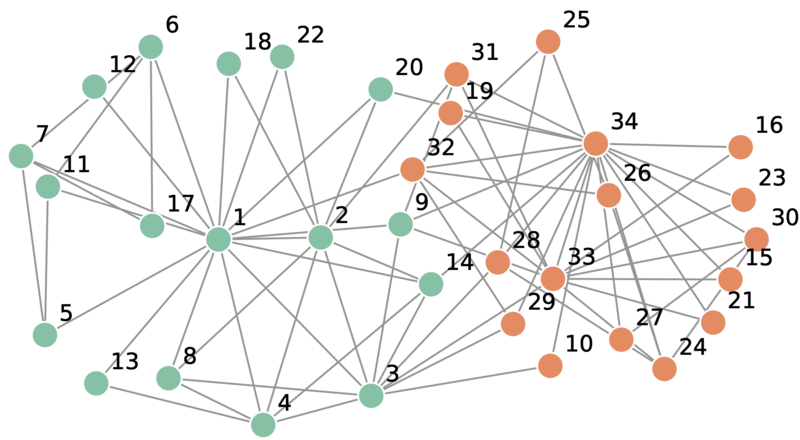
Temple University anthropologist Wayne Zachary was studying a local karate club in the early 1970s when a disagreement arose between the club’s instructor and an administrator, dividing the club’s 34 members into two factions. Thanks to his study of communication flow among the members, Zachary was able to predict correctly, with one exception, which side each member would take in the dispute.
The episode has become a popular example in discussions of community structure in networks, so much so that scientists now award a trophy to the first person to use it at a conference. The original example is known as Zachary’s Karate Club; the trophy winners are the Zachary’s Karate Club Club.
(Wayne W. Zachary, “An Information Flow Model for Conflict and Fission in Small Groups,” Journal of Anthropological Research 33:4 [1977], 452-473. Thanks to Snehal Shekatkar for the image.)
09/01/2024 Reader Peter Dawyndt points out that the reason for the single exception in Zachary’s prediction is notable. The person whom Zachary assigned to the wrong faction corresponds to node 9 in this graph of the network:

“This person joined the newly founded karate club with supporters of the teacher (node 1) after the split, despite being a weak supporter of the president (node 34). This choice stemmed mainly from opportunism: he was only three weeks away from a test for black belt (master status) when the split in the club occurred. Had he joined the president’s club, he would have had to give up his rank and begin again in a new style of karate with a white (beginner’s) belt, since the president had decided to change the style of karate practiced in his club. Having four years of study invested in the style of the original club’s instructor, the individual could not bring himself to repudiate his rank and start again.”
(Thanks, Peter.)
